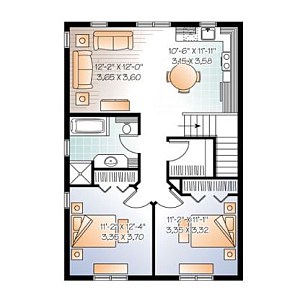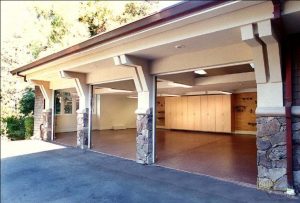
Converting your garage into a kitchen is one of the fastest ways to increase living space in your house. This can not only be a great addition, but can also save you time and money. It is customizable to meet your specific needs and preferences.
Garage kitchen conversions can generally be affordable. The price will vary depending on the size of the room and the materials used. However, it can be an extremely exciting project to undertake. You can transform a garage into a beautiful place for your family to enjoy time together with just a bit of creativity.
If you're considering a garage kitchen conversion, it's important to take the time to learn about the different aspects involved. This includes learning how to connect your new cooking area to the rest. This can include researching local building regulations. Some zoning laws and homeowner communities may restrict a garage conversion, so make sure to check. A permit may be required, which can prove costly if you don't know what to do.

Before you transform your garage into a cooking space, first determine the garage's layout. If you have sufficient space, you could design an open-plan, spacious kitchen and living room. You can also convert a portion to a bedroom or a bathroom if you have less space. Another option is to add an extension to the garage's side, which could turn it into a home workspace.
You should also consider the quality of your current fixtures and fittings. The right fixtures will make your new kitchen function at its best. If you're on a tight budget, you can save on the price of new appliances by opting for built-in units. Also, you can use your existing cabinets and countertops to save on the cost of purchasing new ones.
When you are installing a new kitchen, plumbing, electricity and flooring will all be important. It is important to create a detailed list of all the items you will need to install. This includes flooring and windows. When it comes to hiring a contractor, having a detailed list of everything is helpful.
Speak with a local contractor to determine if you should convert your garage into a kitchen. A local contractor will be able tell you everything you need to know and offer suggestions for connecting your new kitchen with the rest of your home.

The cost of a garage kitchen conversion will depend on the size of the room, the amount of appliances, and the quality of the construction. Although you need to be cautious not to spend too much, it is not unreasonable to spend as high as $6,000 for the project.
Planning permission is required to convert your garage in to a functional cooking area. In addition, you will need to pay for plumbing, electrical, and flooring. Depending on where you live, you might have to install a new mains supply as well. Costs for a new water pipe can exceed PS3,000
FAQ
What is the difference between a remodel and a renovation?
A remodel is major renovation to a room, or a portion of a rooms. A renovation refers to minor changes made to a particular room or area of a given room. A bathroom remodel can be a large project while an addition to a sink faucet can be a small project.
Remodeling involves the complete or partial renovation of a room. Renovating a room is simply changing one aspect of it. A kitchen remodel might include the replacement of countertops, sinks as well as appliances, lighting, and other accessories. However, a kitchen renovation could include changing the color of the wall or installing a light fixture.
What are some of the largest costs associated with remodeling your kitchen?
When planning a kitchen renovation, a few major costs are involved. These include demolition, design fees, permits, materials, contractors, etc. They seem quite small when we consider each of these costs separately. But when you combine them, they quickly add up to be quite significant.
Demolition is most likely the most expensive. This involves removing old cabinets, appliances and countertops as well as flooring. The insulation and drywall must be removed. You will then need to replace them with new items.
Next, hire an architect who will draw plans for the space. You will need permits to ensure your project meets the building codes. After that, you have to find someone to do the actual construction.
Finally, once the job is done, you have to pay the contractor to finish the job. The job size will determine how much you spend. This is why it's important to get estimates form multiple contractors before hiring one.
Plan ahead to cut down on some of these costs. You may be able get better material deals or to skip some of the work. You will be able save time and money if you understand what needs to done.
Many people install their cabinets by themselves. This will save them money as they won't need to hire professional installation services. However, this can lead to them spending more to learn how to place cabinets. The time it takes to complete a job can be completed by professionals in half the time.
A cheaper way to save money is buying unfinished materials. It is important to wait until all pieces have been assembled before buying pre-finished materials, such as cabinets. You can begin using unfinished materials right away if they are purchased. If things don't work out as planned, you can always modify your mind later.
Sometimes, however, it's not worth all the effort. It is important to plan your home improvement projects in order to save money.
How long does it typically take to renovate a bathroom?
It usually takes two weeks to remodel a bathroom. The size of your project will affect the time taken to remodel a bathroom. A few small jobs, like installing a vanity or adding a bathroom stall, can be done in one day. Larger projects, such as removing walls and installing tile floors, and plumbing fixtures, can take several days.
A good rule of thumb is to allow three days per room. So if you have four bathrooms, you'd need 12 days total.
What's included in a complete kitchen remodel?
A complete kitchen remodel involves more than just replacing a sink and faucet. You can also get cabinets, countertops or appliances, as well as flooring and plumbing fixtures.
Homeowners can remodel their kitchens completely without needing to do major work. This means that there is no demolition required, making the process easier for both homeowner and contractor.
Kitchen renovations include various services, including electrical, plumbing, HVAC, carpentry, painting, and drywall installation. A complete kitchen remodeling project may require multiple contractors depending on the size of the job.
The best way to ensure a kitchen remodel goes smoothly is to hire professionals with experience working together. There are often many moving parts in a kitchen remodel, so small problems can cause delays. If you choose a DIY approach, make sure you plan and have a backup plan in place in case things go wrong.
What order should you renovate your house?
The roof. Second, the plumbing. The electrical wiring is third. Fourth, the walls. Fifth, the floors. Sixth, the Windows. Seventh, doors. Eighth, it's the kitchen. Ninth, the bathrooms. Tenth, the garage.
Finally, you'll be ready for the attic after you've done all these things.
Hire someone to help you if you don't have the skills necessary to renovate your home. Renovation of your house requires patience, effort, time and patience. You will also need to spend money. If you don't have the time or money to do all the work, why not hire someone else?
Although renovations are not cheap, they can save you a lot of money in the end. It's also a way to make your life more pleasant.
Do you think it is cheaper to remodel a kitchen or a bathroom?
Remodeling a kitchen or bathroom is a costly undertaking. But considering how much money you spend on energy bills each month, it might make more sense to invest in upgrading your home.
It is possible to save thousands every year with a simple upgrade. A few simple changes, such as adding insulation to walls and ceilings, can reduce heating and cooling costs by up to 30 percent. Even a minor addition can increase comfort levels and increase the resale value.
When planning for renovations, it is important to select durable and easy-to-maintain products. Material like porcelain tile, stainless-steel appliances, and solid wood flooring are more durable and can be repaired less often than vinyl or laminate countertops.
You might also find that replacing old fixtures by newer models can reduce utility expenses. Installing low-flow faucets or showerheads can cut water use by up to 50%. By replacing inefficient lighting with compact fluorescent lamps, you can reduce electricity consumption up to 75%.
Statistics
- Windows 3 – 4% Patio or backyard 2 – 5% (rocketmortgage.com)
- $320,976Additional home value: $152,996Return on investment: 48%Mid-range average cost: $156,741Additional home value: $85,672Return on investment: (rocketmortgage.com)
- According to a survey of renovations in the top 50 U.S. metro cities by Houzz, people spend $15,000 on average per renovation project. (rocketmortgage.com)
- About 33 percent of people report renovating their primary bedroom to increase livability and overall function. (rocketmortgage.com)
- 57%Low-end average cost: $26,214Additional home value: $18,927Return on investment: (rocketmortgage.com)
External Links
How To
How to remove tile grout from floor tiles
Tile grouting is something that most people don't even know they have. It seals the joints between tiles. Many different types of grout are available today, each using a specific purpose. We will demonstrate how to remove grout from tile floors.
-
Before you can begin the process, ensure that you have all necessary tools. It is a good idea to have a grout knife, grout scraper, as well as some rags.
-
Now you need to start cleaning off any dirt or debris stuck under the tile. Use the grout knife to remove the grout. Scrape away any remaining grout. You should not damage any tiles.
-
Once you have cleaned everything up, take the grout scraper and use it to clean off any remaining grout. If you don't have any grout, you can continue to step 4.
-
After you have done all the cleaning, you can move on to the next step. One of the rags can be used to soak in water. Make sure the rag is fully wet. Once the rag is wet, you can dry it by wringing the cloth.
-
Then, place the wet towel on the joint where tile meets wall. Keep the rag in place until the grout starts to separate. Slowly pull the rag toward you, and keep pulling back and forth until all of the grout is gone.
-
Repeat steps 4 and 5 until all the grout has been removed. Rinse the ragout. Repeat the process if necessary.
-
Once you have finished removing all the grout, wipe down the surface of the tiles with a damp cloth. Let dry completely.